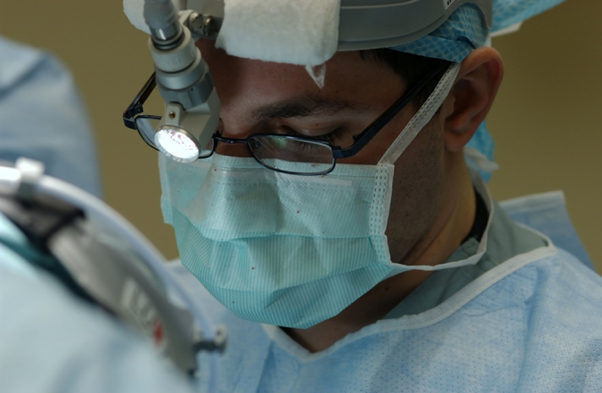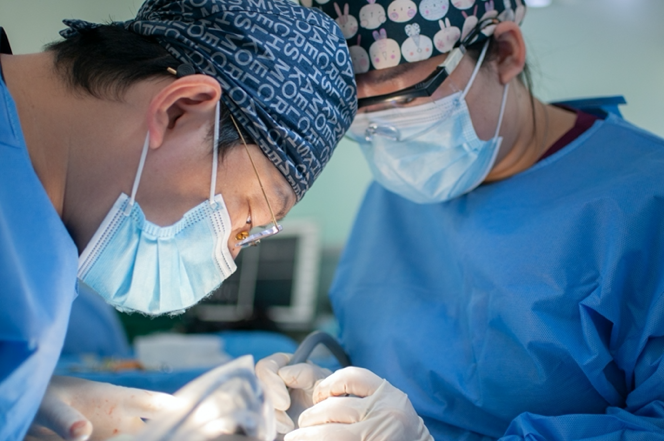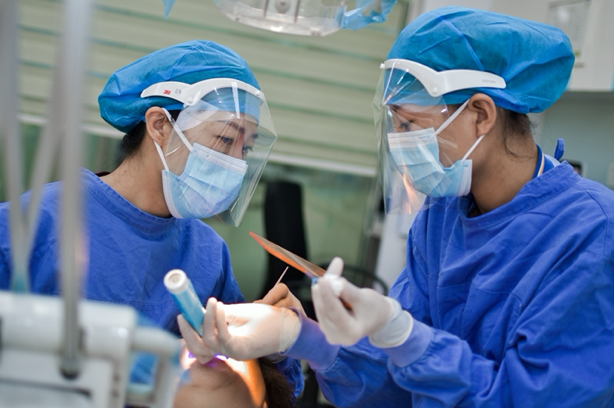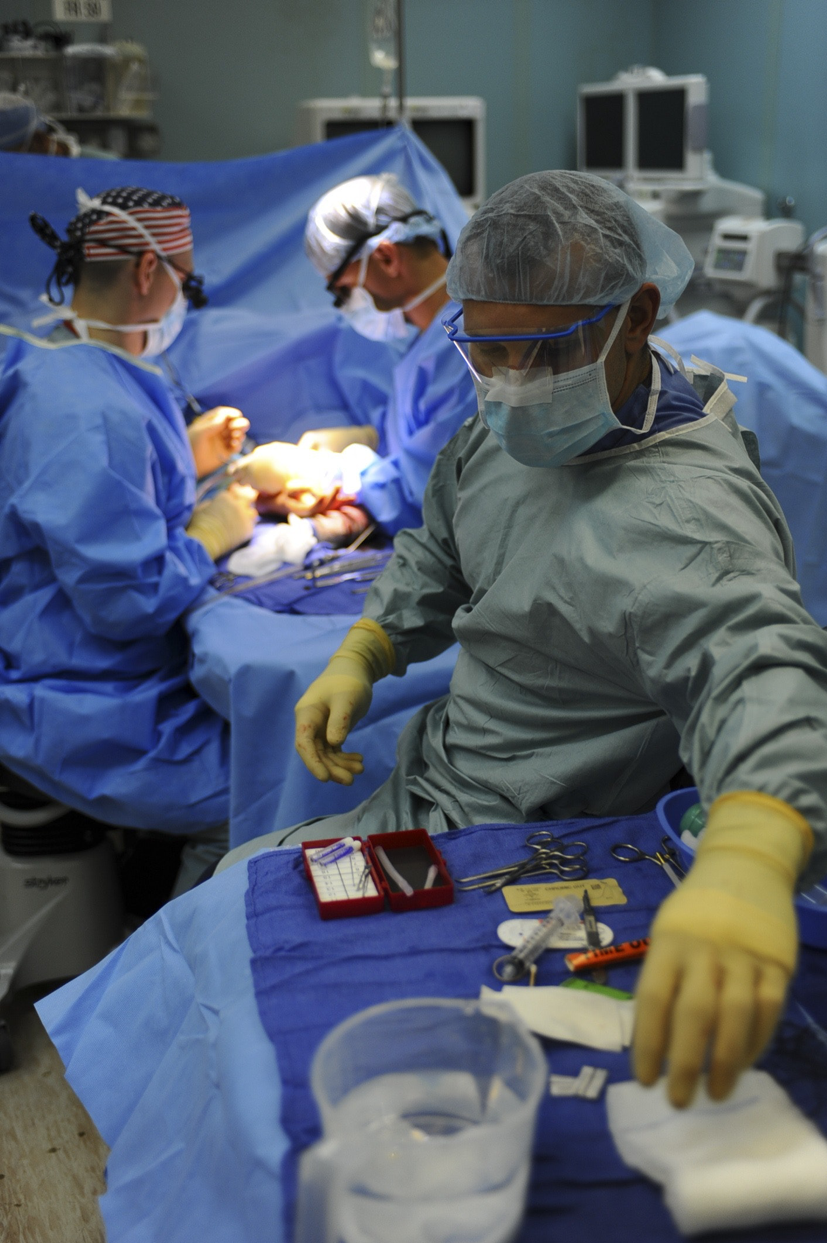CALL TODAY 646-846-1136 | EMAIL
Surgical Experts Dedicated to Improving Lives
At Lenox Hill Surgeons, our dedicated team of nyc surgeons and medical professionals provide compassionate care with the highest ethical & professional standards. In our state of the art facility, we offer surgical services using only the most cutting edge and current procedures and treatments.We specialize in general surgery, including extensive experience in performing hernia repair surgery. Our expertise is in minimally invasive surgery and robotic surgery. Minimally invasive and robotic surgery often allow patients to experience easier recovery than traditional open surgery. They also allow for more precise and less traumatic surgery. When robotic and minimally invasive surgery is not an option, we are also skilled and experienced in traditional open surgical procedures.
All of our doctors are experienced and skilled surgeons having undergone extensive training in school, residency and fellowships. They all practice medicine with ethical behavior, compassion and superb bedside manner. In the operating room they all exhibit precise mechanical abilities, analytical thinking and the ability to visualize tissue in three dimensions. These innate and learned skills allow our surgeons to be some of the most dexterous and skilled professionals in all of New York City and the Country.
Call us: 646-846-1136
About The Surgeons
PATIENT TESTIMONIALS
Recent Awards
We are honored and deeply appreciative to have consistently received prestigious awards and recognition year after year, establishing us as one of New York’s foremost hospitals for a wide range of general surgeries, safety measures, specialized procedures, and overall excellence in healthcare. At Lenox Hill Surgeons, our unwavering commitment lies in delivering exceptional care and unwavering support to our patients, guaranteeing their safety and successful recovery throughout their entire surgical experience.
Hospital Quality Awards
 America’s 50 Best Hospitals Award™ (2023, 2022)
America’s 50 Best Hospitals Award™ (2023, 2022)
Top 1% in the nation for providing the highest clinical quality year over year.

America’s 100 Best Hospitals Award™ (2021)
Top 2% in the nation for consistently delivering clinical quality year over year.

America’s 250 Best Hospitals Award™ (2023, 2022, 2021)
Top 5% in the nation for consistently delivering clinical quality.

Patient Safety Excellence Award™ (2023, 2022)
Top in the nation for providing excellence in patient safety by preventing infections, medical errors, and other preventable complications.
Specialty Clinical Quality Awards

America’s 100 Best Hospitals for Cardiac Care Award™ (2023, 2022, 2021, 2020, 2019)
Superior clinical outcomes in heart bypass surgery, coronary interventional procedures, heart attack treatment, heart failure treatment, and heart valve surgery.

America’s 100 Best Hospitals for Coronary Intervention Award™ (2023, 2022, 2021, 2020, 2019)
Superior clinical outcomes in coronary intervention procedures (angioplasty with stent).

America’s 100 Best Hospitals for Prostate Surgery Award™ (2023, 2022, 2021)
Superior clinical outcomes in prostate removal surgery and transurethral resection of the prostate.
Click to see all of our Healthgrades best doctors awards


Visit our main website at www.LenoxHillSurgeons.com
Blog Posts are Below:
Category Archives: Appendix Surgery
Appendix Surgery: Understanding Appendicitis and Surgical Interventions
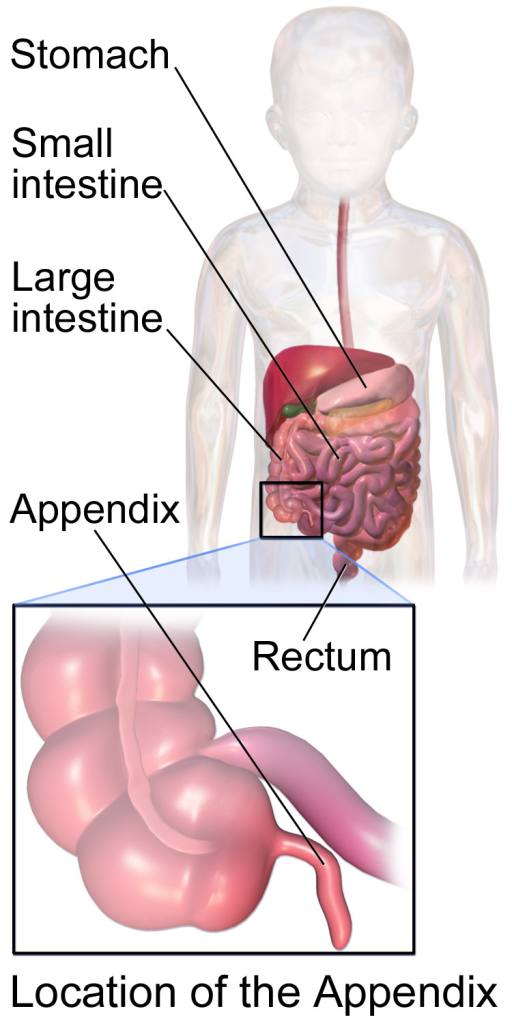 In this informative article, we will explore appendicitis, its symptoms, and the surgical interventions available for its treatment. The appendix may be a small organ in the human body, but when it becomes inflamed, it can cause significant pain and discomfort. Appendicitis is a common condition that often requires surgical intervention to prevent complications. At Lenox Hill Surgeons, a leading general surgery practice in New York City, our skilled surgeons specialize in appendix surgery.
In this informative article, we will explore appendicitis, its symptoms, and the surgical interventions available for its treatment. The appendix may be a small organ in the human body, but when it becomes inflamed, it can cause significant pain and discomfort. Appendicitis is a common condition that often requires surgical intervention to prevent complications. At Lenox Hill Surgeons, a leading general surgery practice in New York City, our skilled surgeons specialize in appendix surgery.
Understanding Appendicitis
Appendicitis occurs when the appendix becomes inflamed. The appendix is a small, finger-shaped pouch located in the lower right abdomen. While its exact function is still unknown, it is believed to play a role in the immune system. When the appendix becomes blocked, usually by fecal matter, it can lead to an infection and inflammation.
Symptoms of Appendicitis
Appendicitis typically presents with the following symptoms:
- Pain in the lower right abdomen: The pain usually starts around the belly button and then moves to the lower right abdomen. It may worsen with movement, coughing, or sneezing.
- Nausea and vomiting: Many individuals with appendicitis experience nausea, which may be accompanied by vomiting.
- Loss of appetite: Appendicitis can cause a decreased appetite or complete loss of appetite.
- Fever and chills: In some cases, appendicitis can lead to a low-grade fever and chills.
- Changes in bowel habits: You may experience changes in your bowel movements, such as diarrhea or constipation.
It’s important to note that symptoms can vary from person to person, and some individuals may not exhibit all of these symptoms. If you suspect you have appendicitis, it is crucial to seek medical attention promptly.
Surgical Interventions for Appendicitis
The primary treatment for appendicitis is surgical removal of the inflamed appendix, known as an appendectomy. At Lenox Hill Surgeons, our experienced general surgeons offer two main approaches to appendix surgery:
Open Appendectomy
During an open appendectomy, the surgeon makes an incision in the lower right abdomen and removes the inflamed appendix. This traditional approach allows direct visualization of the appendix and surrounding tissues. While it requires a larger incision, open appendectomy remains a reliable and effective surgical intervention.
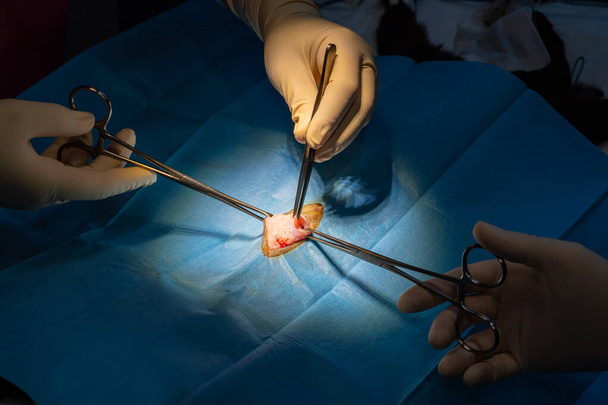
Laparoscopic Appendectomy
Laparoscopic appendectomy is a minimally invasive technique that utilizes several small incisions and a laparoscope, a thin tube with a camera, to guide the surgical procedure. The surgeon inserts specialized instruments through the small incisions to remove the appendix. Laparoscopic appendectomy offers several advantages, including smaller incisions, less post-operative pain, faster recovery, and reduced scarring.
The choice between an open or laparoscopic appendectomy depends on factors such as the severity of the appendicitis, the patient’s overall health, and the surgeon’s recommendation. At Lenox Hill Surgeons, our skilled surgeons will assess your individual case and determine the most suitable approach for your appendix surgery.
Appendicitis and Surgical Intervention Services at Lenox Hill Surgeons
When it comes to appendix surgery, trust the expertise of the surgeons at Lenox Hill Surgeons. Our dedicated team is committed to providing exceptional surgical care with a patient-centric approach. We prioritize your well-being and strive for optimal surgical outcomes.
Contact us today to schedule a consultation and experience the expertise of our renowned surgeons:
LENOX HILL SURGEONS
155 East 76th Street
Suite 1C
New York, NY 10021
646-846-1136
lenoxhillsurgeons@gmail.com
Visit our website for more information: https://lenoxhillsurgeons.com/
All About Appendix Surgery
Appendix surgery, more commonly known as appendectomy, is the surgical removal of an appendix from inside a person’s body. This rather common procedure has no negative implications and is a result of very few complications. The appendix is a small pouch-shaped organ inside our body. It takes space in the lower right side of the abdomen.
An interesting thing about the appendix is that it is of no functional use to the human body. Scientists do not know of the purpose of the appendix. Therefore, the removal of this organ results in no impact on a person’s health.
The most common reasons for the appendix are that it helps a person recover from stomach issues, such as diarrhea, infections, and inflammations of the abdomen. However, many people undergo appendix surgery and live healthy and long lives, which makes these claims unfounded speculations.
Appendix Surgery: Issues
People are often victims of an inflamed and infected appendix. The appendix is often vulnerable to bacteria and disease invasion. In some cases, the bacterial invasion inside an appendix causes pus and inflammation to grow rapidly. Thus, a person usually experiences excruciating pain in the lower right side of their stomach. Often people mistake this pain for a stomachache and avoid medical attention.
However, this is an alarming situation. Leaving appendicitis unnoticed will lead to the overdevelopment of bacteria, and this can lead to harsh conditions, such as nausea, weakness, vomiting, and diarrhea. Thus, urgent medical attention becomes a requirement. In situations such as this, it is ideal for someone to stay rested since walking and movement can cause more pressure in the stomach.
Prolonging this condition can be critical and life-threatening. You must seek treatment as soon as possible. An infected appendix accumulates an infectious cavity inside. The excessive accumulation of this cavity can start putting pressure on the appendix when it has no place to escape.
Therefore, this pressure causes unrelenting pain, and leaving this condition untreated for a long period can result in the bursting of the appendix. A perforated appendix will release the infectious puss and material onto the abdominal cavity. This will lead to an array of further complications and, quite possibly, death.
Appendectomy
A person has to go through an appendectomy in the case of a swollen or inflamed appendix. An appendectomy is the only treatment for appendicitis. Since the appendix has no purpose in the human body, removal solves all the problems that come with a perforated appendix. However, a person must get an appendectomy before the bursting of the appendix.
An appendectomy is a surgical procedure that completely rids a person of all the intense symptoms of appendix inflammation. The symptoms include:
- Stomach pain, starting from the bottom and spreading across until settling into the lower right side.
- Swelling of the stomach
- Constipation or diarrhea
- Nausea
- Vomiting
- Appetite loss
- Slight fever
- Abdominal Rigidity
Types of Appendectomy
You will find two types of appendectomy procedures. The first one involves an open surgery, and the second one involves the laparoscopic tool. Both surgeries share a similar purpose. However, the methods differ slightly. Your doctor can opt for the choice of method by looking at a patient’s severity and also medical history.
Open Appendectomy
An open appendectomy simply involves the surgeon making an incision on the lower right side of your abdomen, where your appendix is located. This incision gives the surgeon a clear opening towards the appendix. The team of doctors will then remove the appendix and stitch the incision wound close. The surgeon has to perform a step further and clean your abdominal cavity if the appendix burst and released harmful substances. Therefore, rupturing of the appendix is also a reason why the doctor chooses this surgical procedure.
Laparoscopic Appendectomy
For this appendectomy procedure, the surgeon makes small incisions on a person’s stomach instead of a big one. After that, the surgeon inflates the abdomen by inserting a tube that releases carbon dioxide gas inside. Inflating the stomach makes the surgeon’s visibility better so that they can perform this procedure with precision and accuracy.
After that, the surgeon will insert the laparoscope inside the abdomen. This is a tube-like tool that has a camera on its end. The high-resolution camera allows the doctor to have a clear view of the internal abdomen. After locating the appendix with the laparoscope, the surgeon performs the removal of the inflamed organ. Lastly, they clean the incisions and close them. This method is less invasive and gives the patient a much quicker recovery time.
All About Appendix Surgery: Conclusion
If you have abdominal discomfort and want access to the best testing and treatment facility in New York, visit Lenox Hill Surgeons. Get experienced consultancy from specialists in the field. Call us now at (212) 988-1136. For more information, visit our website.
Appendix Removal Surgery
What is the process of appendix removal surgery? The appendix is a small tube-shaped organ inside the human body. It sits in the lower right side region of the abdomen. Medical experts do not exactly know about the function and purpose of the appendix organ. To this day, the exact functionality of the appendix is unknown. However, some believe that it aids in the digestion process. However, appendix removal, or appendectomy is a very common procedure and the removal of the appendix has no affects on the health of a person.
Appendectomy
An appendectomy is a surgical procedure that aims to remove the appendix from a person’s body. Usually, people who undergo this surgery are emergency patients that come are suffering from appendicitis.
Appendicitis
Appendicitis is a disease that causes the appendix to swell up. The swelling of the appendix is an inflammatory response of the appendix. Appendicitis occurs when there is a bacterial invasion inside the appendix. The bacteria inside the appendix begin to multiply and create puss. Consequently, when the puss increases, it starts to press against the inner walls of the appendix, since it cannot escape. As a result, the appendix starts to become swollen, and the pressure inside increases, causing severe pain to an individual.
This pain starts in the lower right side of the stomach and spreads all across the abdominal area. A person suffering from appendicitis pain has trouble walking, coughing, or doing any other activity. Some of the intense symptoms of appendicitis include vomiting, stomach pain, nausea, fever, diarrhea, and fainting in some cases. Appendicitis is an emergency, and a person needs to get medical attention as soon as possible.
Delaying appendicitis can lead to an adverse situation for a person. Since the accumulation of the pus stretches and pressure the appendix. Delaying appendectomy can ultimately cause the appendix to burst once the pressure reaches its peak point. Having a perforated appendix inside the abdominal region can lead to complications. This is because the bacterial material burst out into the abdominal cavity. In this circumstance, one puts the other abdominal organs into harm.
How to Prepare for an Appendectomy?
Before a patient goes into surgery, they have to complete an eight hour fast, in which they do not eat or drink anything. The doctor will also make a complete list of the medications you take so that the doctor can tell you whether you need to continue them before and after surgery. Other information is also necessary such as previous medical conditions and allergies. This information is important since it helps the doctor determine the surgical technique they will use and the medications they will provide.
Diagnosis
Initially, when a patient suffering from appendicitis goes to the doctor, the doctor will likely perform a physical examination. This examination includes asking the patient about the location of the pain and gently pushing the abdominal region to spot the location and source of the pain. Once the doctor confirms the physical diagnosis of appendicitis, they may also run digital screening tests to re-confirm appendicitis. However, this may not be necessary the appendix is at a critical stage. In that instance, the patient goes straight into surgery without imaging or blood tests.
Types of Appendectomy Procedures
There are two types of appendectomy procedures, the surgeons decide which ones to perform after consideration of certain factors. These factors involve the severity of the situation, the age and medical history of the patient, and the underlying conditions of the patient, especially bleeding disorders. The two types of procedures are open appendectomy and laparoscopic appendectomy.
Open Appendectomy
An open appendectomy is a simple and straightforward surgical approach. It involves a surgeon making an incision on the stomach. They make the incision on the lower right side of the stomach, which is the location where the appendix is situated. This allows them a full view of the appendix.
After the incision, the surgeon operates the infected appendix, removing it and cleaning any bacterial mess if the appendix bursts. This surgical approach is ideal when the appendix bursts because the surgeons have room to clean the interior parts.
Laparoscopic Appendectomy
Unlike open appendectomy, this surgical approach allows surgeons to make smaller incisions on the abdomen. After the incisions, they insert a small tube inside the abdomen and pump carbon dioxide gas inside it so that the stomach is inflated and they have room to use the laparoscope.
This is a tube-like device, with a high-intensity light and camera attached on its end. Surgeons use this device to navigate the appendix and cut it off with the help of stitches. Furthermore, this surgery is more favorable to people that are old, overweight, or have bleeding issues. The smaller incisions allow them to recover faster.
Appendix Removal Surgery: Conclusion
If you or any of your close relatives have symptoms that point to appendicitis, make sure that you do not leave it unnoticed. Lenox Hill Surgeons is a medical facility in New York that makes it easy for you to get treatment. Explore our website for more information or book an appointment now by calling 646-846-1136.
Appendicitis Surgery
Appendicitis occurs when the appendix gets inflamed or swollen. It’s a medical emergency that almost always requires the immediate appendicitis surgery to remove the appendix. Luckily, you can live without this organ peacefully.
So, where is your appendix? This 3 and a 1/2 inch long organ extends from your large intestine on the lower right side of your abdomen.
What Causes Appendicitis?
Appendicitis can strike in any gender and at any age. But it is rare in children who are less than the age of 2. Mostly, it occurs in people between the ages of 10 and 30.
Appendicitis occurs because your appendix gets clogged up because of the presence of feces, any foreign body like bacteria, or cancer. This blockage can also happen because of infection since the appendix can inflame in response to a body infection.
Types and Procedure of Appendectomy
There are two methods to perform the appendicitis surgery, open and laparoscopic. Your doctor will choose the type of surgery considering several factors, including the complexity of your appendicitis and medical history.
Open Appendectomy
In this procedure, your surgeon makes one long incision on the lower right side of your abdomen. Then, they remove the appendix and close the opening with the stitches. The open appendectomy allows your surgeon to clean the abdominal cavity if the appendix has erupted.
Your doctor will choose this method if the particles inside the appendix spread to the abdomen. This option is also perfect for patients who have had abdominal surgery earlier as well.
Laparoscopic Appendectomy
During the laparoscopic appendectomy, your surgeon removes the appendix by making multiple small incisions in your abdomen. The doctor then inserts a small narrow tube known as a cannula. This instrument helps to pump up your belly with the carbon dioxide gas. This method allows your surgeon to see the appendix.
After inflating your abdomen, the doctor injects a tool called a laparoscopic through the incision. This instrument is a long, thin tube that has a high-intensity light and high-resolution camera. The camera helps your surgeon to see inside your body and aids in guiding them by displaying images on a screen. When the doctor locates the appendix, they take it out from your body. All the incisions are sterilized, closed, and dressed.
This type of surgery is a perfect option for seniors and patients who are overweight. This method has fewer risks than open appendectomy surgery and typically takes a shorter time to recover completely.
What You Face During Appendectomy
Before your surgeon removes the appendix, they will give you antibiotics to fight against infection. You will be asleep throughout the appendicitis surgery after taking anesthesia. The doctors remove the appendix by making a 4-inch long incision or with a tool called a laparoscope, in your abdomen. If any patient has peritonitis, then the surgeon will also clean their abdomen and drain the pus.
Moreover, you can get up and walk around after 12 hours of your surgery. Mostly, people go back to their regular routine after 2 to 3 weeks. If your surgeon uses the methods of laparoscopy, then you will recover faster.
Contact your doctor if you face any of the following problems after appendicitis surgery:
- Uncontrolled vomiting
- Pus in the wound
- Increased abdomen pain
- Feelings of faintness or dizziness
- Blood in your vomit or pee
- Excessive pain and redness at the place of the incision on your belly
- Fever
Bottom Line
Appendicitis surgery is one of the simple, quicker, and effective procedures. Almost all surgeries get successful and typically don’t show any severe complications. However, appendicitis itself is life-threatening. This health problem can cause trouble more than you think. If your appendix gets severe, then it can erupt in your body. The particles in the appendix, such as bacteria and feces, can cause infection in the abdomen.
If this happens with the patients, they need to rush towards the emergency to get the surgery immediately. The doctor will not waste any time and start the treatment. But the treatment is always the surgery. Moreover, if you face any symptoms of appendicitis, go to your doctor to have a checkup. Your doctor will suggest the best treatment.
In this case, Lenox hills surgeons can help you. We have surgeons who are serving in this field for many years and provide you the best treatment possible. They perform appendicitis surgery using the best technology and methods to prevent any complications. Visit our website or call us on 646-846-1136 to book an appointment. Hurry up before it is too late.
Recovery from Appendix Surgery

When a patient is suffering from appendicitis, they need a surgery called appendectomy as treatment. This disease occurs when your appendix starts to inflame and to cause pain. If you don’t rush to the hospital to get the treatment, this disease can take your life. It is because the appendix can burst in your abdomen, which infects your other organs.
This surgery is usually an emergency treatment, but it’s common and typically don’t have side effects. This surgery requires removing your appendix. This organ is a small pouch that doesn’t have any important function in your body. However, it gets infected or blocked by bacteria, stool, and foreign bodies, and can turn into a problem.
After the operation, the patient usually goes back to their home on the same day or after a few days. The recovery from appendix surgery usually takes a few weeks, and you can go back to your regular regime.
Recovery from Appendix Surgery
Your surgeon treats your appendix either by open surgery or laparoscopic surgery. The incisions made in these methods leave scars on your belly that usually fade away with time.
After the surgery, you may feel tired and weak for many days when you return home. Your abdomen can swell, and you may experience pain. If you undergo laparoscopic surgery, you may feel pain in your shoulder for around 24 hours. Patients also feel sick and have diarrhea, gas, constipation, or a headache. These feelings typically go away in some days.

Recovery from appendix surgery typically doesn’t take many days, and recovery times depend on the surgical technique chosen. In the case of laparoscopic surgery, patients can return to their normal routine after 1 to 3 weeks, whereas open surgery takes 2 to 4 weeks to get fully recovered. If your appendix burst, you can have a drain in your cuts (incision).
The human body works fine without an appendix. Moreover, the patient doesn’t require making changes in their lifestyle and diet.
Will You Feel Pain After Recovery?
Yes, the feeling of pain is common after the surgery. You may feel pain near the incision spot and in your abdomen. You may also feel pain sensations in your shoulders. It occurs due to the carbon dioxide inflated in your body during the surgery. However, the shoulder pain typically goes away in 24 to 48 hours.
You can use ice to relieve the pain, but ask your nurse or doctor about the correct way of applying. Your doctor may also prescribe you a small quantity of narcotic pain medicine to give you relief. Many people recover without them, but some patients need narcotics for some days.
Some people also feel sick to the stomach or vomit after their operation. It happens because of the surgery and anesthesia. But you should overcome this problem in a day or two. Consult your doctor if you keep feeling sick or vomiting.
What Activities Can You Do After Recovery?
After recovery from appendix surgery, a person can become active according to their body strength. The surgeon also suggests walking. You can also use stairs on the day of your operation. Your doctor will remove your bandages the very next day of your surgery, and you are free to take a shower. Moreover, you will feel better each day after you get discharged. If you don’t feel recovery, then call your doctor.
You can start your regular regime after a week, but you need to avoid strenuous activities. If your work includes intensive activities, like heavy lifting, then ask your doctor when you will be able to go back to your job. Moreover, if you are not taking narcotic pain medicines, and don’t feel any pain, you can drive after 24 hours you have taken anesthesia.
However, patients need more time to recover if they receive open surgery. Your doctor will suggest you the time when you can go back to your routine.
Bottom Line
As you have learned, recovery from appendix surgery is not usually painful and doesn’t take an extended period. The surgery is also simple. The only reason for the horror of the appendix surgery is the appendix itself. Mostly, people show symptoms suddenly, which can lead to the eruption of the appendix. If the person doesn’t undergo surgery immediately, it can be life-threatening. This is why you need to treat your appendix as early as possible.
Contact us at Lenox Hills Surgeons, if you are looking for the best surgeons in town. We have a dedicated team of surgeons who has years of experience in treating the appendix. You can visit our website or call us on 646-846-1136 to schedule an appointment.
Appendectomy
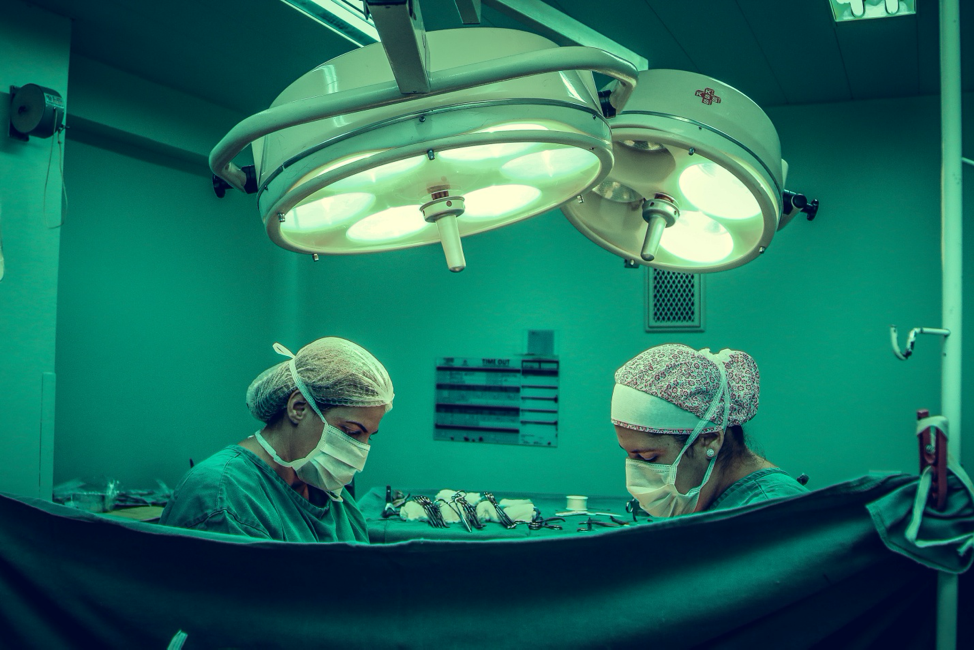
Appendectomy is the surgical method for removing the appendix. Mostly, this procedure takes place on an emergency basis. Some patients who are undergoing abdominal surgeries for any other health problems can ask their doctor to remove the appendix so that appendicitis doesn’t get a chance to develop in the future. It would help if you discussed it with your surgeon first.
Appendectomies are a quick method of removing your appendicitis. It has a few risks or side effects that your doctor can easily cure. It is best to treat your appendicitis because if you wait for a longer time, it can erupt, which can be life-threatening and challenging to treat.
So, if you have signs of appendicitis, then consult your doctor on an emergency basis to save your life.
Why Is an Appendectomy Performed?
When your appendix gets inflamed and swollen because of the infection, surgeons remove it by performing appendectomies. This health disorder is known as appendicitis. The condition occurs in your appendix when its opening becomes blocked by the stool or bacteria. It leads to inflammation, and your appendix becomes swollen.
The most effective and quickest way to solve the problem is to remove the appendix. Unfortunately, the appendix can burst if it doesn’t get immediate and proper treatment. When the appendix erupts, the bacteria and fecal particles inside the organ spread into your abdomen.
It can cause a severe infection called peritonitis. A person can also build up an abscess if their appendix burst. Both of these problems are life-threatening and needs immediate treatment and surgery.
Symptoms of Appendicitis
There are various symptoms of appendicitis, some of them are:
- Severe stomach pain starting suddenly around the belly button and traveling to the lower right side of the abdomen
- Swelling in abdomen
- Rigid abdomen muscles
- Diarrhea or constipation
- Vomiting
- Nausea
- Fever
- Loss of appetite
Mostly, appendicitis pain occurs in the lower right side of your abdomen, but pregnant women can feel the pain in the upper right side of their abdomen. One in every 1,500 pregnant women needs an appendectomy.
You need to rush to the emergency if you feel you are facing any of the mentioned symptoms. It is best to get treatment immediately to avoid any further health problems and complications.
Appendectomy Procedure
Usually, surgeons perform appendectomies in operating rooms. First, they shave the patient’s hairs and swab with a germ-killing medical solution. This sterility method helps to avoid infections.
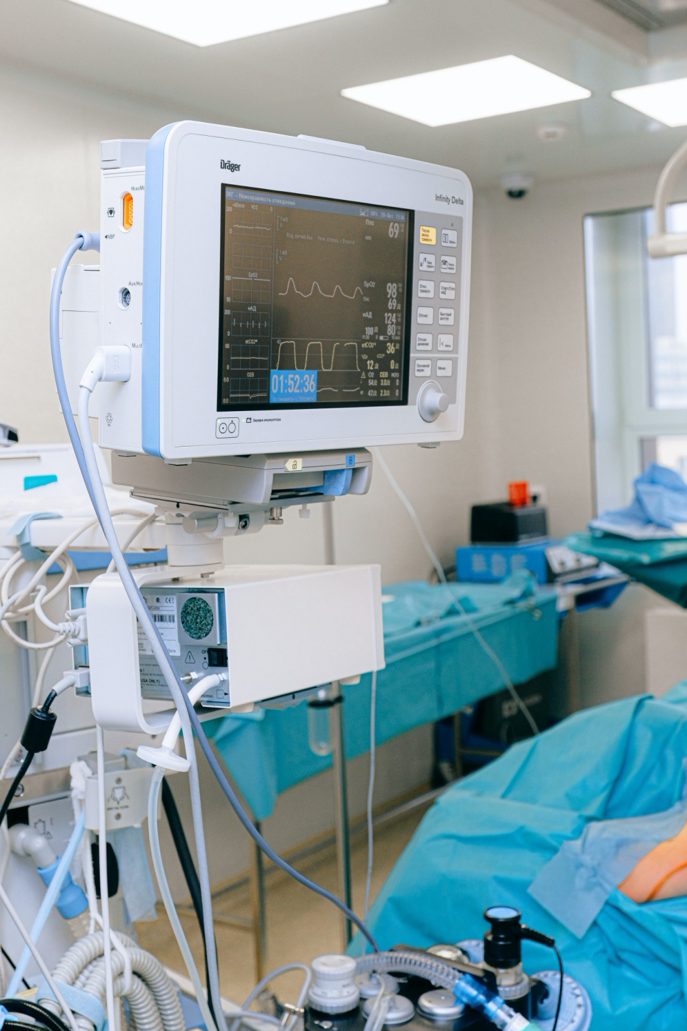
Moreover, the surgeon can use either laparoscopic techniques or open surgery methods for removing the appendix. The open surgery involves making a 2 to 3-inch incision in the lower right-hand side of your abdomen to remove the appendix. The other method requires several small incisions in your abdomen; it uses a laparoscope to capture images of the inner body. The surgeon removes the appendix with the help of these images.
Home Much Time You Need To Recover?
The recovery time after appendectomy varies from person to person and also widely depends on the type of the surgical method, type of anesthesia, and complication that develops after surgery. For instance, a laparoscopic appendectomy can take place on an outpatient basis so that the patient can go home to recover.
However, open methods may need an overnight stay or more than that to be cured enough to go home. The patient can start to perform normal regular activities in a few days. Still, complete recovery can take 4 to 6 weeks to resume strenuous activities. Until this time, you need to avoid extra stressful activities.
Risks of an Appendectomy
An appendectomy method is one of the most common surgeries and simpler to perform. However, there are some risks related to the surgery, which can be painful, including:
- Bleeding
- injury to nearby organs
- infection
- blocked bowels
However, it’s important to understand that the risk of not treating your appendicitis is more severe than these associated risks of appendectomy. Patients require appendectomy immediately to deter peritonitis and abscesses from developing.
Bottom Line
You need to take this condition seriously and get its treatment immediately. If you are looking for a surgeon who can perform appendectomies without causing any complications in your surgery, Lenox Hill Surgeons are here to help you.
We use cutting-edge technology, and our qualified surgeons have the expertise to make your surgery successful. Whether you need an appendectomy or other treatments for other abdominal-related conditions, contact us today to book an appointment. You can either visit our website or contact us on 646-846-1136.
Don’t wait too long to treat your appendicitis!
Surgery For The Appendix
Appendix Surgery or Appendectomy involves the removal of appendix after the occurrence of appendicitis. Let’s find out about when you need an appendix surgery, what the procedure involves, and where to get best surgeons for appendectomy.
Why do People Get an Appendix Surgery?
Appendicitis is a serious medical condition that requires an appendix surgery. It occurs due to the infection in the appendix because of growing bacteria or clogging of the stool in the appendix. The infection causes inflammation and severe pain that is only treatable with the removal of the appendix. In the case of an accident or serious injury that causes the trauma and appendicitis, appendectomy is the only surgical option available. Peritonitis is a serious condition resulting from the inflammation of the appendix and can cause the appendix to rupture.
Procedure for Appendix Surgery
First, the surgeon will administer the patient with certain antibiotics to prevent the overgrowth of bacteria. The dose of antibiotics will depend upon the degree of the damage. In the case of sepsis, the patient would have a single dose of injectable antibiotic. If the appendix has ruptured already, the surgery will start without administering the antibiotics.
The patient will undergo general anesthesia before the surgery. For the surgery, there are two common methods; open surgery and laparoscopic surgery.
Open Surgery for the Appendix Removal
The surgeon will sterilize the skin with a germ-killing solution first. In rare cases, the surgeons do need to shave the skin in the appendix area. The surgeon will then cut the skin deeply (2-3 inches) to open the portion of lower abdomen to expose the appendix. If there is some mass growing on the appendix, the surgeon will make incisions on the mass as well.
Beneath the skin, the surgeon will make incision through the layer of protective tissues and abdominal walls to reach the appendix. Once the surgeon identifies the location of the appendix, he/she will carefully cut the appendix and remove it out of the patient’s body. After that, the surgeon will stitch the peritoneum layer, which he/she had previously ruptured for the removal of the appendix. The surgeon will stitch the skin of the lower abdomen.
Minimal Invasive Laparoscopy
Laparoscopy is the recent trend in surgical procedures, which involves cutting certain a part of an organ or removing if entirely. This process involves making three small incisions (of ¼ or ½ inches) to expose and remove the appendix instead of opening a larger portion of the stomach or lower abdomen. This surgery also uses a small camera or laparoscope, which is a mini tv-like monitor to show the appendix and the surgery procedure in an enlarged view. To remove the appendix laparoscopically, our surgeons have special instruments that can easily perform the surgery without any deep incisions.
Advantages of Laparoscopic Appendectomy
Laparoscopic appendectomy has several benefits over the open surgery appendectomy.
- The surgeon will make only a few stitches on the patient’s body. This means the post-operative pain significantly reduces in this procedure as compared to an open surgery.
- The recovery is also quicker.
- The patient achieves the normal functioning of the bowel quickly.
- The hospital stay is lesser for laparoscopic surgery.
- Laparoscopic surgery gives better cosmetic results. The stitch marks do not look horrible.
—
Are you having problems with your appendix? Call us at 212-988-1136 to book an appointment. We have NYC’s best surgeons for laparoscopic appendix surgery. For more information visit our main website.
Appendicitis
Appendicitis is one of the most common factors responsible for abdominal pain, which can lead to surgery. More than 5 percent of people in the US experience appendicitis at some point. However, the pain most often occurs in people aged between 10 and 30.
Appendicitis is the inflammation of a 3.5-inch long appendix tube that protrudes from the large intestine. The condition calls for an immediate treatment, most probably surgery to remove the appendix.
Leaving an inflamed appendix untreated will cause the tube to burst. Thus, the inflamed appendix may start spilling infectious bacteria into the abdominal cavity. And, it may prove fatal sometimes.
Symptoms of Appendicitis
Usually, the first sign of appendicitis is a sudden pain that begins in the upper abdomen and radiates to the lower right portion of the abdomen. The pain may become excruciating when you cough or walk.
The inflamed appendix may cause you to lose appetite, or you may feel nausea or vomiting as soon as the pain begins. Abdominal bloating and low-grade fever, usually 99 – 102 Fahrenheit, may also serve as signs of the inflammation of appendix.
The other symptoms of appendicitis include severe cramps, dull or sharp pain in the back, rectum, or the lower or upper abdomen.
What Causes Appendicitis?
While the root cause of appendicitis remains unknown in most of the cases, doctors believe that inflammation occurs when the appendix is blocked. The obstruction in the lining may occur due to hardened stool, intestinal worms, enlarged lymphoid follicles or cancer.
The blockage in the appendix results in an infection, which may multiply the bacteria. Thus, it leads to the swelling and formation of pus in the appendix, thereby causing inflammation. You may also feel severe pain in the abdominal region, and if not treated timely, the appendix may rupture.
Appendicitis’ Diagnosis
The symptoms of appendicitis are often confused with that of the gallbladder diseases, bladder or urine infection, intestinal infection, gastritis, and ovary problems. This makes the diagnosis of appendicitis tricky. Your doctor may conduct these tests for diagnosing the inflammation in the appendix.
- Examination of the abdominal region: This helps identify the stiffening of the abdominal muscles when the doctor applies pressure on the appendix.
- Rectal Exam: The doctor examines the lower rectum with a lubricated gloved finger.
- Blood Test: The blood tests show a high white blood cell count in the body, thereby indicating an infection.
- Urinalysis: The urine test helps rule out a urinary tract infection or a kidney stone as a possible cause of the pain.
- Imaging Tests: The doctor may require an abdominal X-ray, ultrasound, a CT scan, or an MRI of the patient for the diagnosis of appendicitis.
Treatment: Appendectomy
The standard treatment for all appendicitis is appendectomy, i.e., the removal of appendicitis. The doctor may either perform open surgery or a laparoscopic surgery depending on the severity of the problem.
During the open surgery, the doctor makes an incision, which is usually 2 to 4 inches long. Doctors perform this type of surgery when the appendix has ruptured, and an excess abscess or puss has formed around it. Thus, the doctor drains the fluid and cleans the abdominal cavity.
Once the infection is under control, the doctor may perform minimally invasive or laparoscopic surgery. The surgeon will use some incisions to insert surgical instruments and a video camera into the abdominal region to remove the appendix.
Final Word
Do not neglect the pain that you experience in your abdomen. It may be a sign of an inflamed appendix. If you do not go for a treatment promptly, it may cause your appendix to rupture. Contact Lenox Hill Surgeons in NYC today and book an appointment with the experts of minimally invasive surgery.
Appendix Surgery – What to Expect
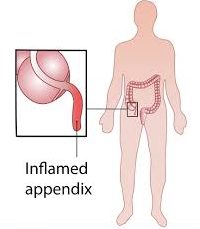 The exact purpose of the appendix is relatively unknown even to modern science. Some experts believe it to be a sort of “home” for healthy bacteria that can be used to fight off dangerous invading cells. Other believe that the appendix does nothing, that it is simply a mass that no longer has a physical function in our daily lives. Regardless of what the appendix is truly intended for, at times it can be inflamed and may require surgical removal.
The exact purpose of the appendix is relatively unknown even to modern science. Some experts believe it to be a sort of “home” for healthy bacteria that can be used to fight off dangerous invading cells. Other believe that the appendix does nothing, that it is simply a mass that no longer has a physical function in our daily lives. Regardless of what the appendix is truly intended for, at times it can be inflamed and may require surgical removal.
Why Would you Need Appendix Surgery?
As mentioned above, we are still a little unclear on many aspects of the functions of the appendix. In other organs, it can be clear that the organ needs to be removed when it fails to function properly. This observation cannot be made effectively for the appendix. However, there are a few specific cases in which it is clear that the removal of the appendix would be beneficial. One common case is appendicitis, or inflammation of the appendix. Although we don’t know exactly what causes appendicitis, this inflammation is clear evidence of a potential issue in the body. It is usually a company by discomfort or pain and the lower right quadrant of the abdominal cavity. Other signs of appendicitis include stomach pain, vomiting, and nausea.
Yet another reason that the appendix may need to be removed is in cases of tumor growth. Should a tumor grow on the appendix and be cancerous, it could potentially metastasize, or spread, to other parts of the body. Studies have shown little to no danger or long-term deficits associated with removal of the appendix. Therefore, it is typically preferred to remove the appendix when there is a risk of cancer. This can serve to protect the rest of the body.
What Happens Before Appendix Surgery?
Prior to appendix surgery, you will have a long discussion with your doctor about your specific case. For example, we will want to know what symptoms you have been having, if you have a family history of any number of ailments, the current medications you are taking, and more. your personal preference with regard to surgical procedures and desired outcomes must also be discussed.
Many specific diagnostic tests can be completed to ensure that the appendix is the culprit. For example, CT scans and ultrasound measures can be used to determine swelling and inflammation of the appendix, a sure sign of infection. On the day of the surgery, it will be important to avoid eating or drinking prior to the surgery. It is generally recommended that eating and drinking be done more than 8 hours prior to the surgery, but your surgeon will have more specific instructions for you. During the surgery itself, we will do what we do best and remove the inflamed or damaged tissue.
What is Appendix Surgery Recovery Like?
After the surgery, you will most likely first notice relief from the pain where your appendix used to be. However, it is still common for some incision and surgical site pain shortly after surgery. This discomfort will subside. While healing from appendix surgery, it will be important to get plenty of rest while still staying active. Although your surgeon will have specific instructions, there are a few that are typically followed. Avoid heavy lifting for at least a few weeks following your surgery. Any kind of strenuous activity that puts pressure or strain on the incision site is to be avoided.
Depending on the precise surgical procedure you undergo, your recovery may take anywhere from 2 weeks to a few months. Due to the fact that the exact function of the appendix is relatively unknown, diet and lifestyle changes typically are not needed.
Do you need to have your appendix removed? Schedule an appointment with the best surgeons in NYC to discuss your needs today.
LENOX HILL SURGEONS
155 East 76th Street
Suite 1C
New York, NY 10021
646-846-1136
lenoxhillsurgeons@gmail.com
——–
References
https://www.sages.org/publications/patient-information/patient-information-for-laparoscopic-appendectomy-from-sages/
https://www.medicinenet.com/appendectomy/article.htm
https://myhealth.alberta.ca/Health/aftercareinformation/pages/conditions.aspx?hwid=ug3573
https://www.webmd.com/digestive-disorders/digestive-diseases-appendicitis#1
Laparoscopic appendectomy – NYC General Surgeon
Laparoscopic appendectomy: Steps, Benefits, Side-Effects, Precautions & Prognosis
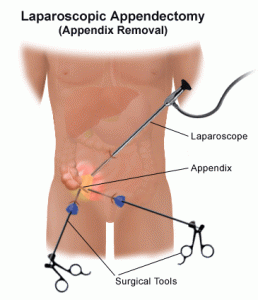 The procedure of surgically removing the narrow, elongated tube attached to the colon-known as an appendix when it becomes diseased, inflamed or infected (appendicitis) is called appendectomy. It is normally carried out on an emergency basis as swollen appendicitis could burst if not excised, causing the clogged stool and bacteria to spread. It would eventually infect other gastrointestinal organs and lead to peritonitis-a life-threatening condition. A ruptured appendix could also create an abdominal abscess which is also a grave condition that could endanger your life.
The procedure of surgically removing the narrow, elongated tube attached to the colon-known as an appendix when it becomes diseased, inflamed or infected (appendicitis) is called appendectomy. It is normally carried out on an emergency basis as swollen appendicitis could burst if not excised, causing the clogged stool and bacteria to spread. It would eventually infect other gastrointestinal organs and lead to peritonitis-a life-threatening condition. A ruptured appendix could also create an abdominal abscess which is also a grave condition that could endanger your life.
Steps
Generally, two kinds of appendectomy are carried out to do away with appendicitis:
- The traditional ‘open appendectomy’
- Laparoscopic appendectomy (a more advanced form of surgery)
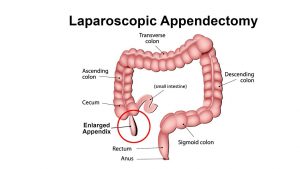 Open appendectomy is more suitable for patients whose appendices have split open and also for those who have undergone abdominal surgery before.
Open appendectomy is more suitable for patients whose appendices have split open and also for those who have undergone abdominal surgery before.
A laparoscopic appendectomy, on the other hand, involves accessing the appendix via three tiny incisions or openings made in the lower abdomen. A cannula filled with carbon dioxide (a slender and small tube) is inserted through the openings for inflating the abdomen following which a laparoscope is slotted in.
A high-resolution camera fixed at the head of the laparoscope transmits the image to a display screen. The displayed images will clearly show the precise location of the appendix which in turn will help the surgeon to channelize the surgical instruments for ligation (of the appendix) and excising it. Keyhole surgery usually resorts if the patient happens to be overweight and aged.
Benefits
The specific benefits of laparoscopic appendectomy vary from one patient to another, depending upon his or her condition. Nevertheless, the common benefits entail:
- Short stay in the hospital
- Reduced postoperative pain
- Faster restoration of normal bowel function
- Speedier return to a normal lifestyle
Side Effects
The associated risk factors or complications are more or less the same for both laparoscopic appendectomy and open appendectomy. Following are some common side effects:
- Bleeding from the operated site
- Seepage from the colonic edge, especially at the juncture from where it was ligatured and removed
- Clotting of the blood vessels in the deeper venous layer and the clots getting transported to the lungs causing pulmonary embolism which could turn fatal
- Increased likelihood of the urinary bladder, ureter, large and small intestines suffering injury
- Heightened risk of infection
Precautions
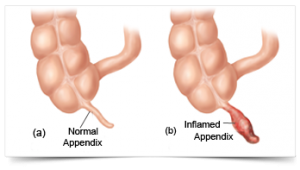 Once you’re through with the surgery, you’ll need to abide by the surgeon’s instructions to stay safe and secure. Your surgeon will generally list the following instructions and precautions:
Once you’re through with the surgery, you’ll need to abide by the surgeon’s instructions to stay safe and secure. Your surgeon will generally list the following instructions and precautions:
- Walking from the day following the surgery to minimize chances of muscle soreness and blood clots
- Taking the prescribed medications on time and completing the medicine course
- Cleaning the incisions regularly to prevent infection risks
- Watching out for symptoms of infection diarrhea, abdominal cramps, and inflammation in the incisions and reporting the same to your physician immediately
Prognosis
Most patients convalesce from appendicitis within 4-5 weeks of the conduction of laparoscopic appendectomy. Nevertheless, a very slim chance of getting infected is always present.
Concluding Remarks
Laparoscopic appendectomy is generally resorted to when there is imminent risk of the inflamed appendix bursting open. The risks related to leaving appendicitis untreated are remarkably grave and could endanger the affected individual’s life. For complete information on laparoscopic appendix surgery of the appendix, you can contact our general surgeon and make an appointment with him for possible surgery.
References
- https://www.sages.org/publications/patient-information/patient-information-for-laparoscopic-appendectomy-from-sages/
- https://www.healthline.com/health/appendectomy#recovery
- https://www.hopkinsmedicine.org/healthlibrary/test_procedures/gastroenterology/appendectomy_92,P07686
- https://www.everydayhealth.com/appendicitis/guide/appendectomy/
- https://www.findatopdoc.com/Healthy-Living/Everything-You-Need-to-Know-About-an-Appendectomy
- https://www.cochrane.org/CD006437/COLOCA_determining-optimal-method-securely-closing-base-appendix-during-keyhole-surgery-after-removal
- https://www.healthpages.org/surgical-care/what-kind-surgeon/
- https://www.cochrane.org/CD006437/COLOCA_determining-optimal-method-securely-closing-base-appendix-during-keyhole-surgery-after-removal



















